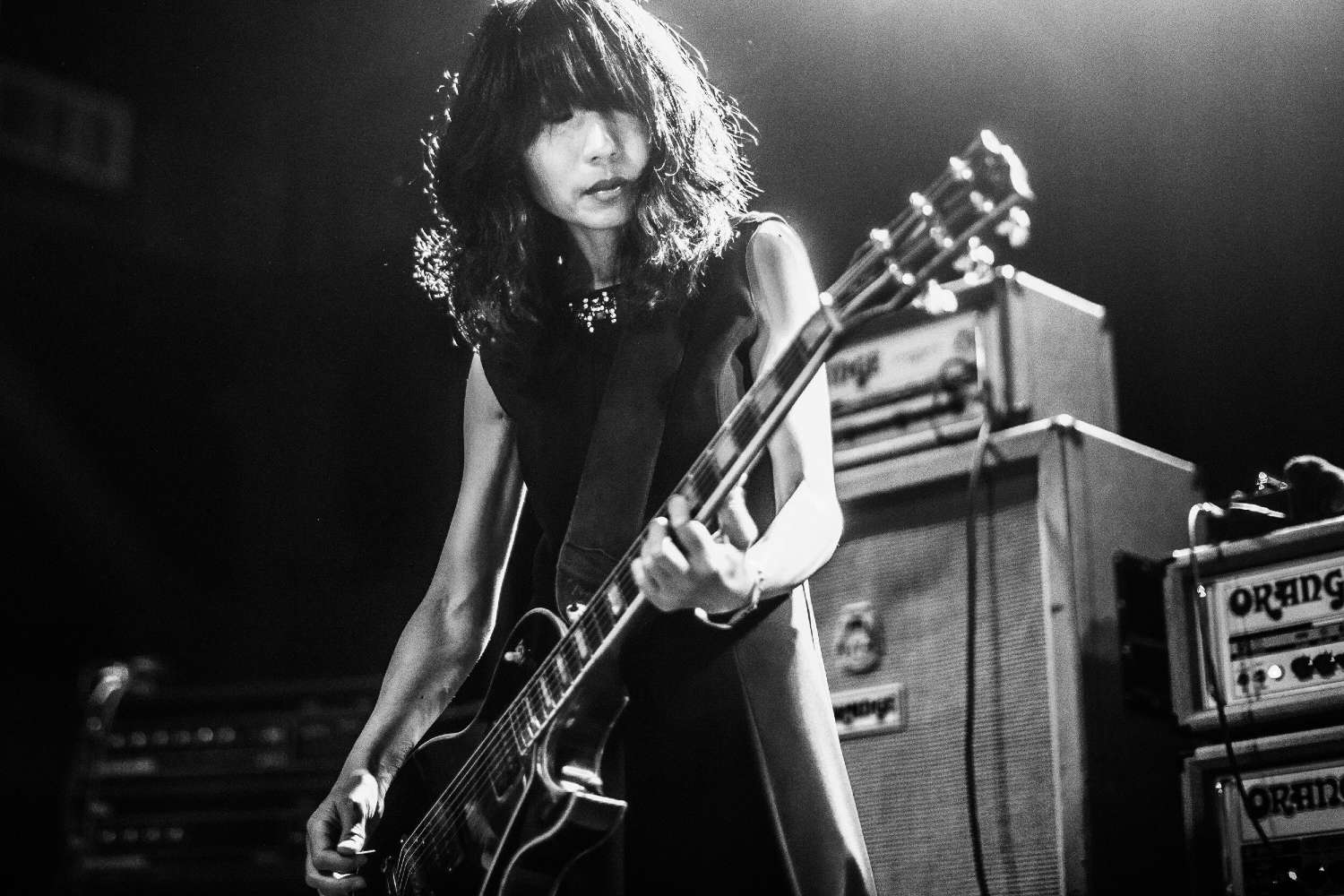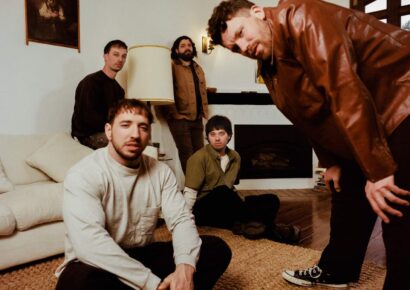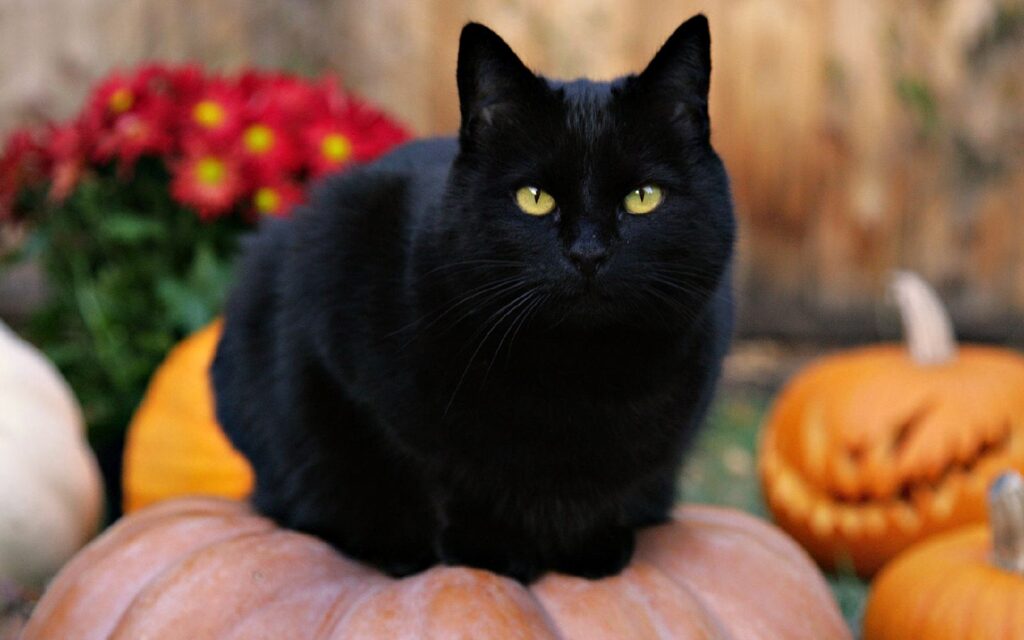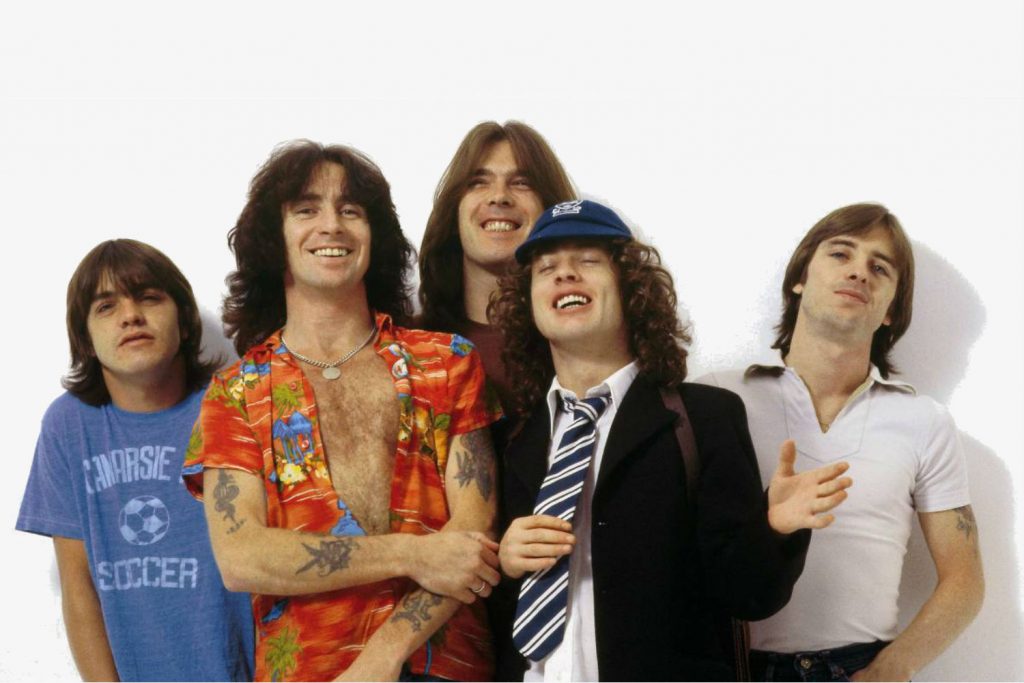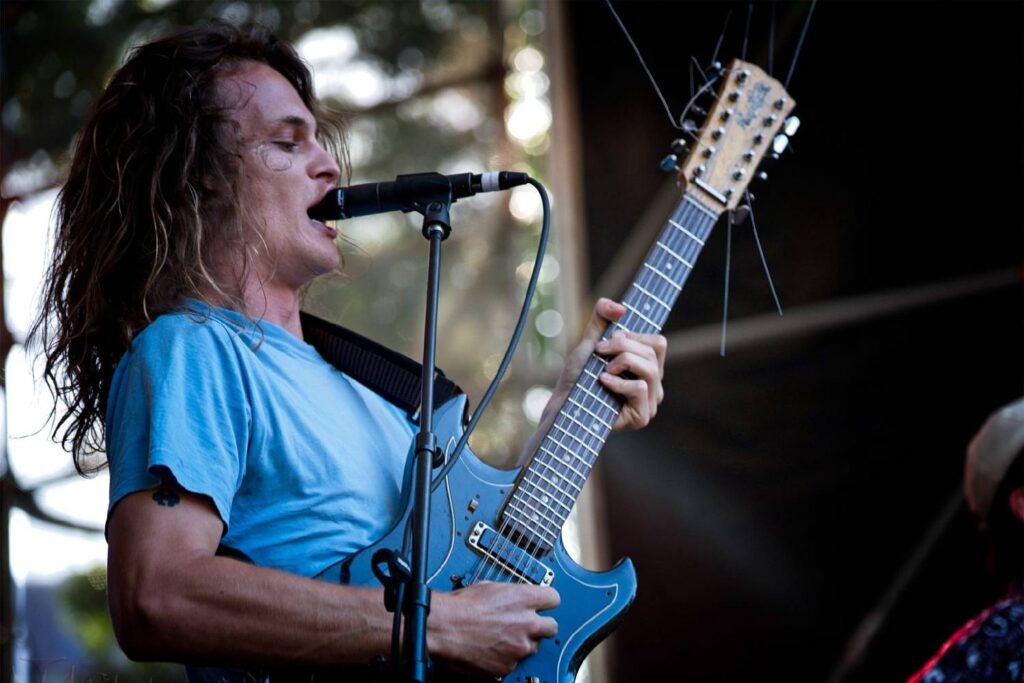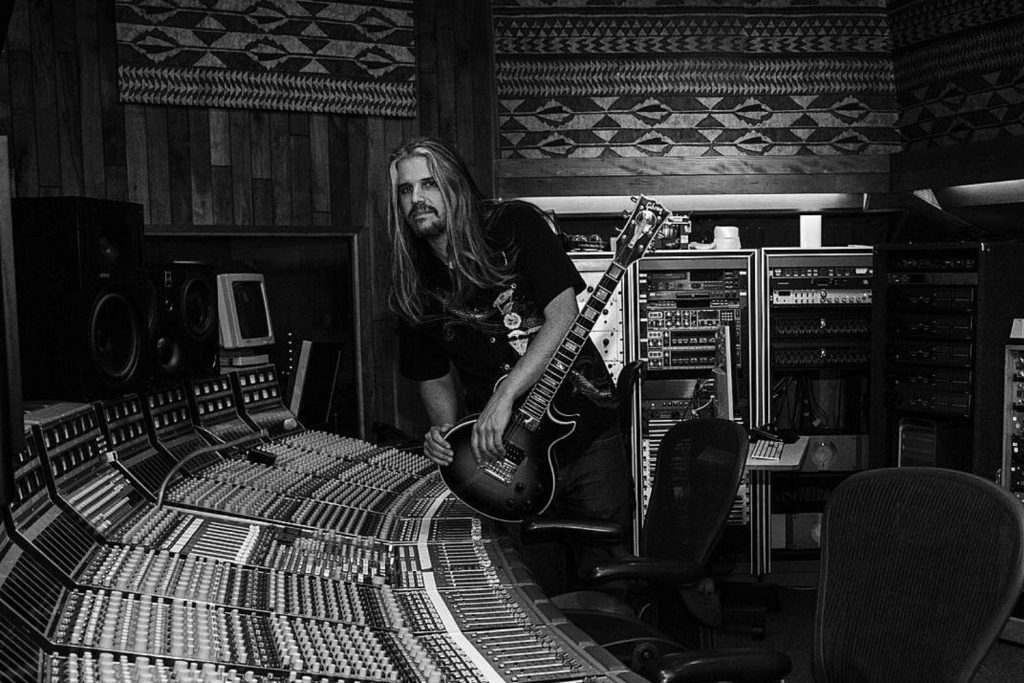Boris formed in 1992 and have been consistently rearranging the landscape of noise, doom, sludge and metal as we know it.
Comprised of Wata (guitars/keyboards), Takeshi (guitars/bass) and Atsuo (drums/noise), Boris have more than 20 studio albums under their belt, including collaborations with some huge names in the genre.
The gear Boris use to create their soundscapes varies widely, with all three members contributing vocals, ambience and noise, jumping between instruments, often with oscillating feedback emanating from whatever they’ve just put down.
Read up on all the latest features and columns here.
Wata
Wata’s sound is like non other; surprisingly clean, but with the crunch of amplifiers crumbling and folding in on themselves with the sheer volume is it all. This tone is helped along by her, now famous, Big Muff.
Elk Big Muff Sustainar
Wata uses a Big Muff clone made by a Japanese company called Elk. The Elk has three controls, like the original Electro Harmonix (EHX) Big Muff, but a cleaner aesthetic, being finished in a brushed metal with simple black, screen-printed designs. The era of Wata’s Elk is special in that while maintaining most of the original design, some simple additions and mods to make it a cheaper clone made it sound unique.
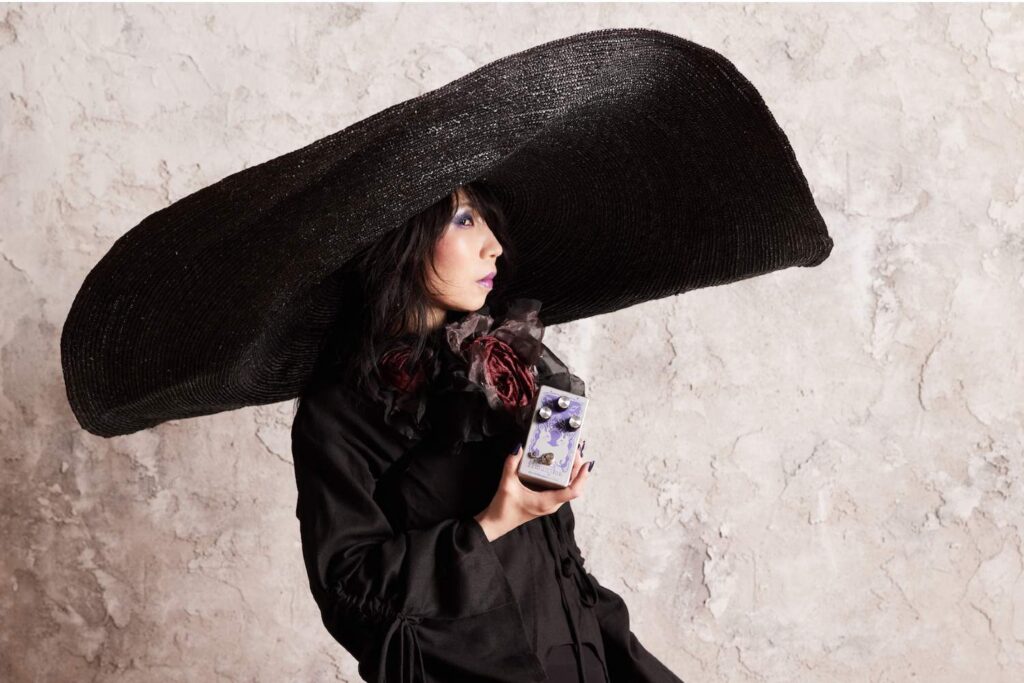
This pedal, Wata’s personal one specifically, was the basis for Earthquaker Devices’ (EQD) Hizumitas Fuzz Sustainar. Again, with three knobs and the unique ‘tube’ sag and grit that Big Muff’s offer, but replicating Wata’s own pedal. The Elk and Hizumitas are closer to a distortion than the EHX Big Muff’s fuzzy tone, making it the perfect pairing for Wata’s Orange and Matamp amps.
Orange & Matamp heads
Matamp predates Orange amplifiers, the two companies coming together in the late 60s and early 70s; Mat Mathias owned Matamp and Cliff Cooper owned the Orange music store, and the company became Orange Matamp amps.
Wata employs multiple amps for live performances, varying from solid state Oranges to old, vintage, tube Matamps.
Wata plays Orange OR120’s live and in video clips, their simple controls giving them away. These are very similar to the Matamp GT120, its logo dating it to the mid-70s.
Wata also plays a more modern Orange Rockerverb 100, a 100-watt tube head with controllable power stages for varying volumes or for more crunch at lower volumes.
Wata Les Paul Custom
Wata primarily plays an ‘86 Les Paul custom, produced at a volatile time in Gibson’s history. 1983 saw Gibson shifting production to Nashville (ending the Norlin-era), before it was sold in 1986 and revamped with a massive increase in sales.
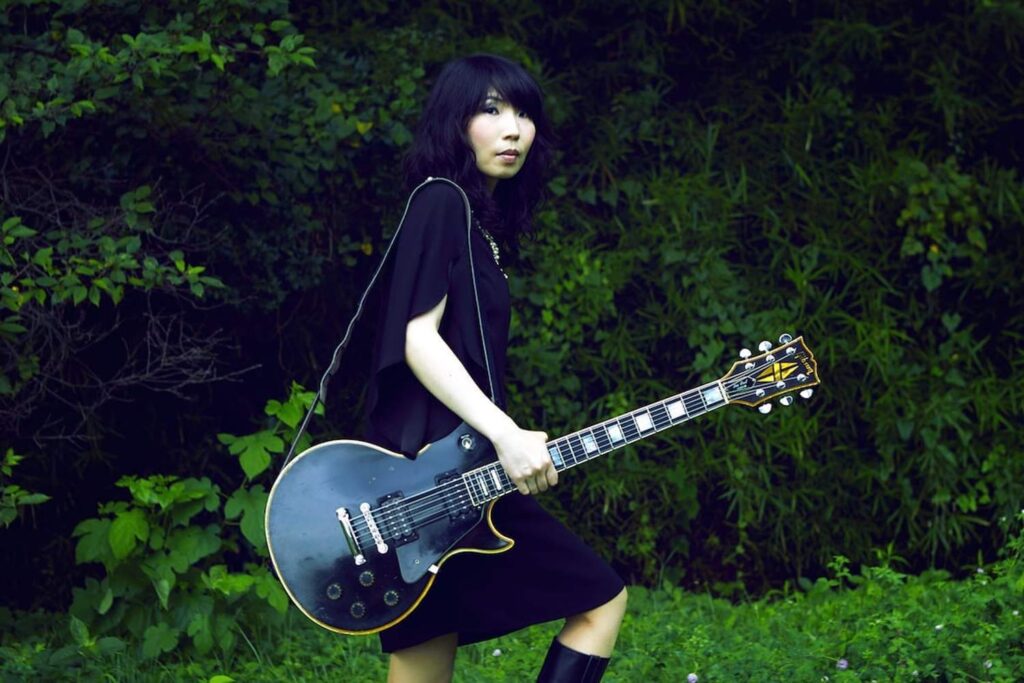
Wata’s main Les Paul Custom is mostly stock, with the pickups replaced with Seymour Duncan JB in the bridge and Seymour Duncan ’59 in the neck, and .60 gauge strings to accommodate Wata tuning down three whole steps from E Standard. Wata also has another ‘86 Les Paul Custom in a deep, dark metallic silver.
Roland RE-201 Space Echo
Sometimes seen with a couple of RE-201s, Wata uses these to add extra depth to her playing, whole also building oscillating, delayed and atmospheric sounds with her guitars. The RE-201 is a famous unit, having been cloned multiple times by a huge array of companies, including Roland and Boss themselves having a handful of clones.
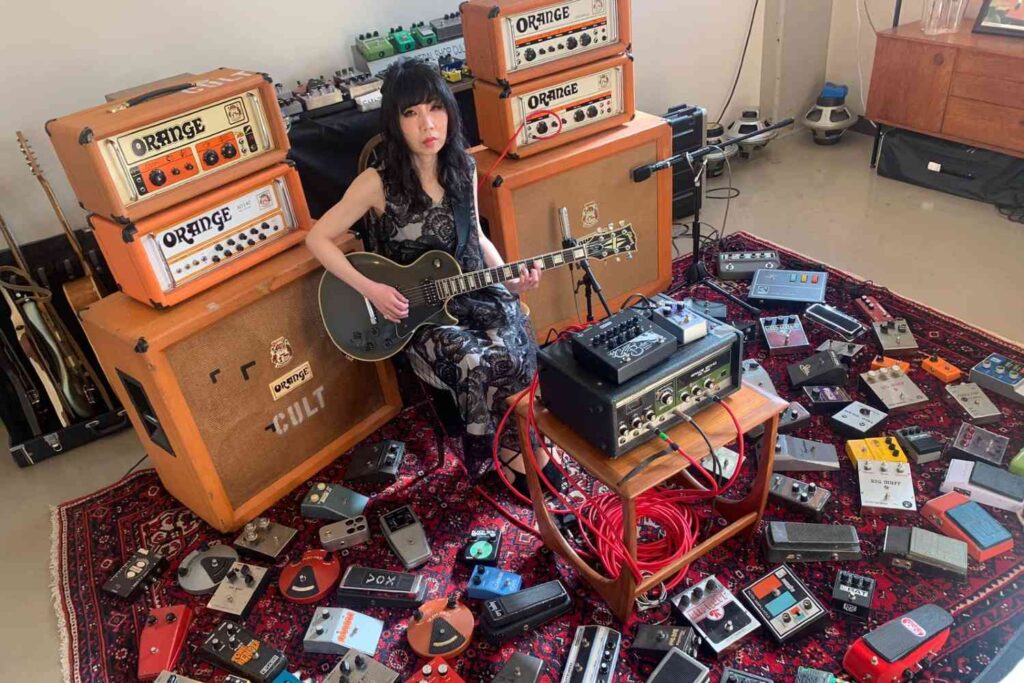
The Roland RE-201 is special because, while the magic of tape delay is something unique in and of itself, the drive and grit of the preamp is enough to make the RE-201 a prized possession of many a player, including Wata.
Takeshi
Contributing vocals as well, Takeshi is unique in that he’s a guitarist/bass player for the band, more often than not with a double neck guitar & bass strung across his shoulder.
First Act double neck bass & guitar
Takeshi’s First Act electric guitar is a vaguely Rickenbacker inspired instrument, the bass side featuring a PJ-style pickup configuration, but with a Rick’s unique upper horn. The bottom half is a dual-humbucker equipped, six string electric guitar.
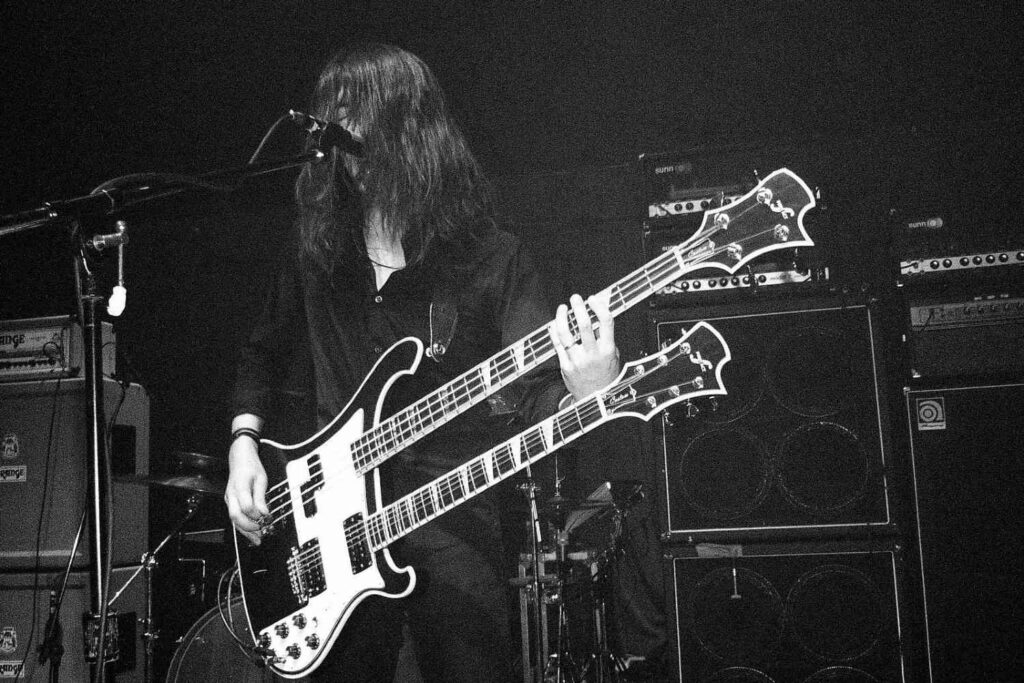
Steinberg Spirit Doubleneck bass & guitar
Another unique double necked guitar and bass is Takeshi’s Steinberg Spirit Doubleneck. Similar in design to his First Act, the Steinberg also features their own unique identifier: no headstock.
The original Doubleneck features fine tuners at the bridges of the instrument, and originally include active EMG pickups, but Takeshi seems to have done away with them in lieu of passive, uncovered pickups on the guitar side of things.
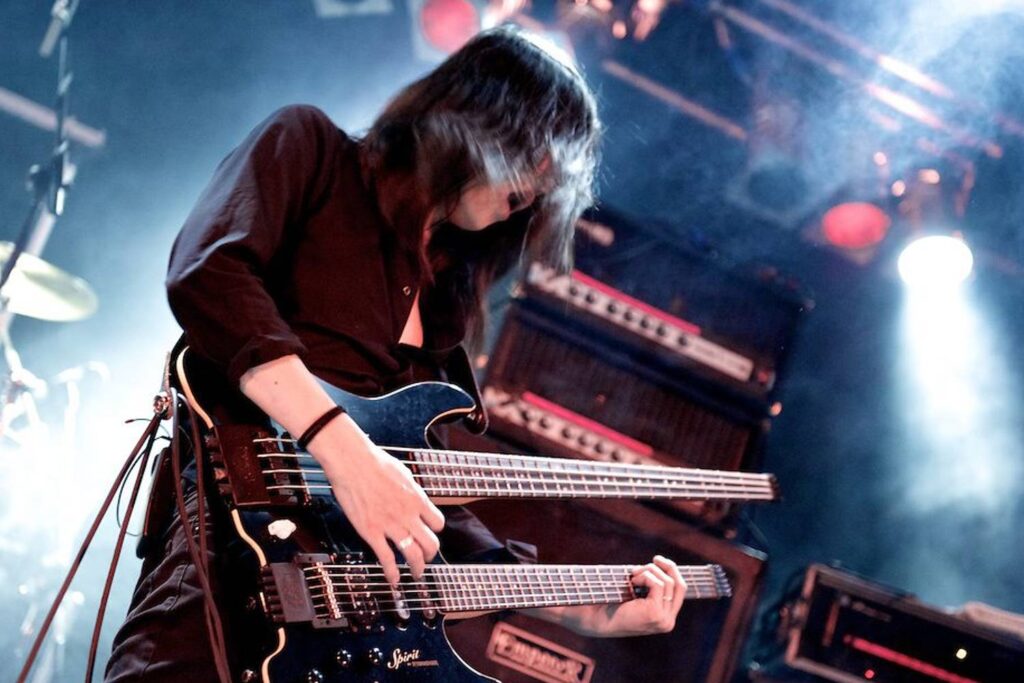
Sunn Model T
To match the sheer volume from Wata’s side of the stage, Takeshi uses a slew of 70s Sunn Model T’s; an amp known for their volume and headroom. A pedalboard full of grit, dirt, noise and distortion handle the heavier side of things, and the Model T’s amplify this into oblivion. Sometimes pictured with up to five on stage, Takeshi says that despite them being the same model at face value, they all vary slightly and have their own unique voice.
Earthquaker Afterneath
Not one to be left behind on the EQD train, Takeshi uses their Afterneath pedal for that special sauce across his reverbs. The Afterneath is an “Enhanced Otherworldly Reverberator” pedal from EQD, offering huge, expansive reverbs coupled with octave shifting options for harmonised (or jarring) ambience, delays and reverb sounds.
Atsuo
Atsuo is unique in that there doesn’t seem to be a whole lot of loyalty to any brand – instead opting for different tools for different jobs. Multiple acrylic kits appear live, whole a huge array of different cymbals for different textures, sounds and effects appear on records, live performances and music videos.
A deep-dive into Atsuo’s instagram reveals things like modified Boss RC-3 Loop Stations, Sony Cassette recorders, and an Alesis Air FX.
Alesis Air FX
The Alesis Air FX is, simply put, a multi-effects processor. What makes it unique is the infrared detectors that sense movement across three axes to adjust and control the selected effect. I’m not sure if that counts as a tactile control, but Atsuo uses it to add depth, space and movement to sounds.
Zildjian gong
While this one isn’t used all the time, Atsuo has also used a Zildjian gong for washy, noisy textures while performing live. Traditional used like a bell, the gong itself resonates and sustains for extends periods, and playing with brushes, mallets or or other tactile tools can create unique sounds.
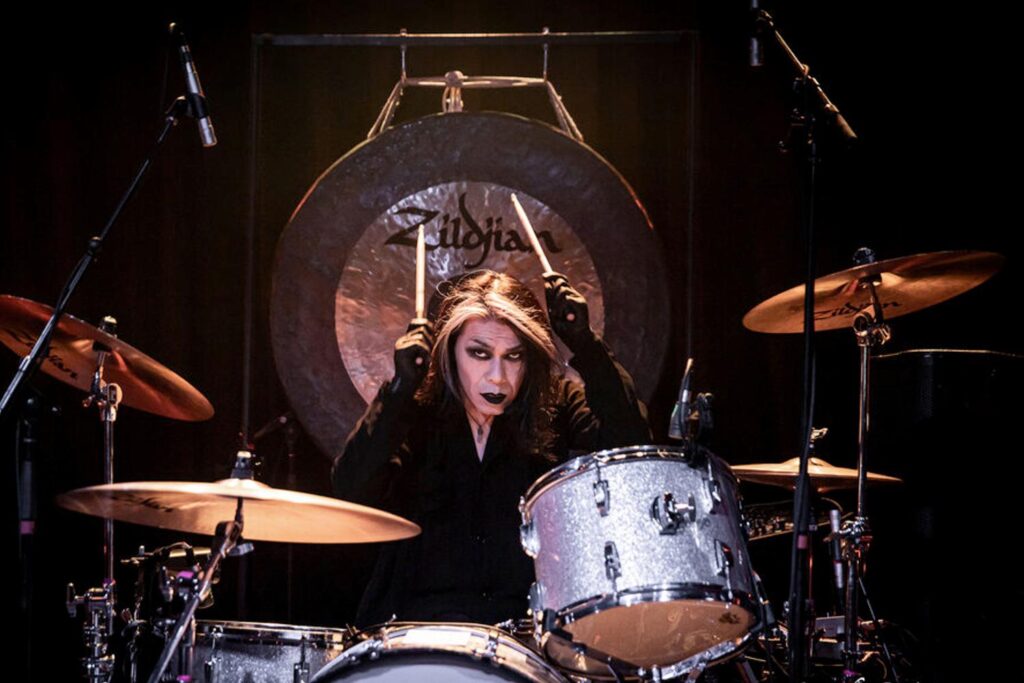
Keep up with Boris here.
